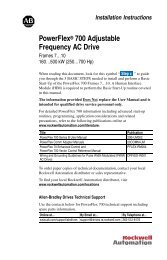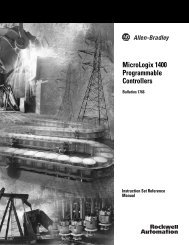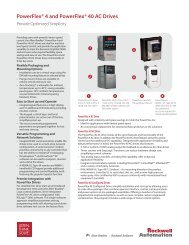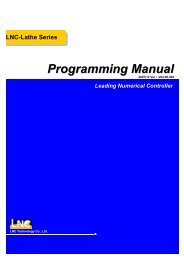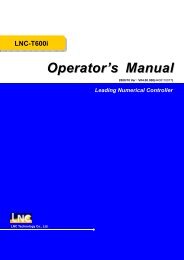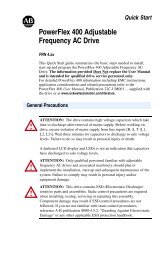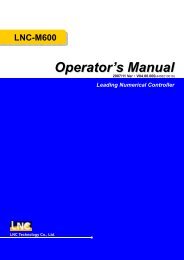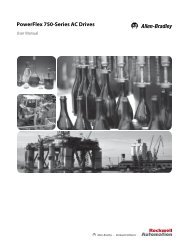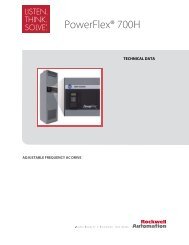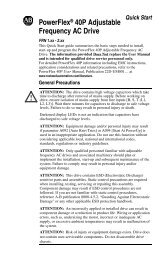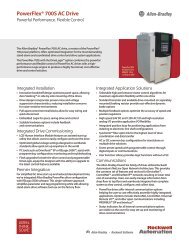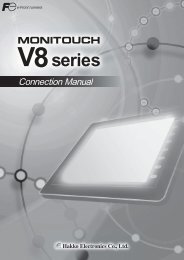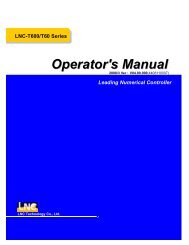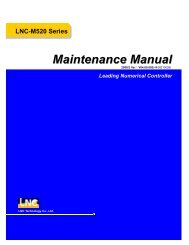You also want an ePaper? Increase the reach of your titles
YUMPU automatically turns print PDFs into web optimized ePapers that Google loves.
Setting Tuning Coefficient on online<br />
To use online auto tuning, set the coefficient at the<br />
fourth digit of SEt-58. Setting range is 0 to 9. If the<br />
fourth position is not 0, online auto tuning function<br />
will be used.<br />
As the value is set higher, the system becomes<br />
more sensitive to load fluctuation.<br />
ATTENTION<br />
If the load fluctuates radiply, online auto tuning coefficient<br />
needs to be set high, but caution is needed because the<br />
system can be momentarily unstable in an environment<br />
where the load fluctuates excessively.<br />
While online auto tuning is being used, please raise system gain (SEt-<br />
42) if the response of the control loop drops and lower it if the system<br />
makes noise or vibrates.<br />
Gain <strong>Manual</strong> Set-up<br />
To set up gains manually, please follow the command below.<br />
1. Set the inertia ratio and system gain automatically executing offline auto<br />
tuning.<br />
2. If the response of control loop is lowered, raise the system gain value. If<br />
the load system makes noise or vibrates, lower the set value until vibration<br />
or noise stops.<br />
If the load system is not composed of optimum combination by 1 and 2<br />
above, adjust the gain minutely as 3, 4 and 5 hereunder.<br />
3. Fine tune the value of each basic gain.<br />
(Speed loop proportional gain, Speed loop integral gain, Position loop<br />
proportional gain, Torque command Filter, Speed command Filter)<br />
4. Fine tune the value of each applied gain.<br />
(Position command filter, Vibration suppression filter, Position feedforward<br />
gain, Position feedforward filter)<br />
5. Set the four parameter required for tuning.<br />
(P control shift switch, P control shift reference value, Speed bias<br />
application range, Speed bias amount)<br />
If the response drops after offline auto tuning, raise the system<br />
bandwidth (SEt-69) a little and run offline auto tuning again. Secure<br />
the maximum response by raising the system gain (Set-42) to the level<br />
before vibration or noise starts.<br />
When the maximum response is secure while the<br />
inertia ratio (SEt-66) is set accurately and the load<br />
system has no vibration or noise, the system gain<br />
can be set as high as possible and becomes the<br />
bandwidth of the overall speed control loop.<br />
89



